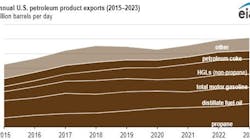Since 2011, natural gas consumption of European member countries of the Organization for Economic Cooperation and Development has been generally declining, and coal consumption has been generally increasing, due to “a confluence of supply and demand factors, in both the gas and coal markets, as well as other economic constraints,” according to the US Energy Information Administration.
“Reduced economic activity lowered overall demand for electricity, particularly in the industrial sector,” EIA said. Annual gas consumption in 2011 by OECD-Europe was 8% lower than in 2010, while coal consumption increased 6%. Similarly, the region consumed 2% less gas and 2% more coal in 2012 than in 2011.
In this year’s first quarter, however, gas consumption was up 3% and coal consumption decreased 6% compared to the same period of 2012, partly due to the Large Combustion Plant Directive from the European Commission, which caused a number of older coal plants to retire despite profitability, particularly in England.
On the supply side, gas production in OECD-Europe was 5% lower in 2012 than 2011, while coal production increased less than 1% during the same period, according to the EC.
“Production decreases, along with declining natural gas imports from Russia, Norway, and Algeria, and rising coal imports from the United States and Colombia supported by the sharp decline in global coal prices have affected energy consumption patterns in OECD-Europe between 2011 and 2012,” EIA said.
EIA added, “Comparing 2013 to 2012 (through late September), natural gas imports from Russia to Western Europe are up more than 30%, while imports from Norway are down about 7%, according to Bentek Energy.”
EIA listed some key factors affecting gas and coal market prices and supplies in Europe. For gas price and supply, these factors include:
• Competition for LNG from Japan, China, and South Korea.
• Pricing structure indexed to oil.
• Norwegian gas production.
• Supply disruptions due to regional conflict in Algeria and Libya.
• Non-uniform pricing by Russian gas suppliers.
• Limited storage capacity availability, especially in northwest Europe.
• Coal price in Europe are affected by abundant supply due to favorably priced US exports of coal.
• Electric power sector changes following the Fukushima disaster and the retirement of nuclear power reactors, and environmental initiatives by the carbon price.
Contact Conglin Xu at [email protected].

